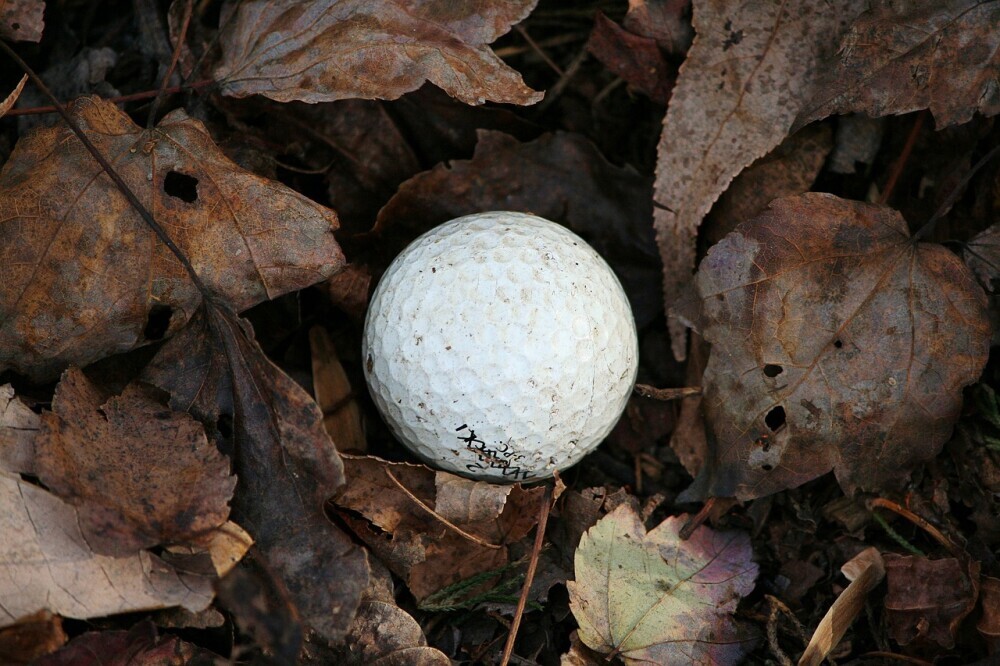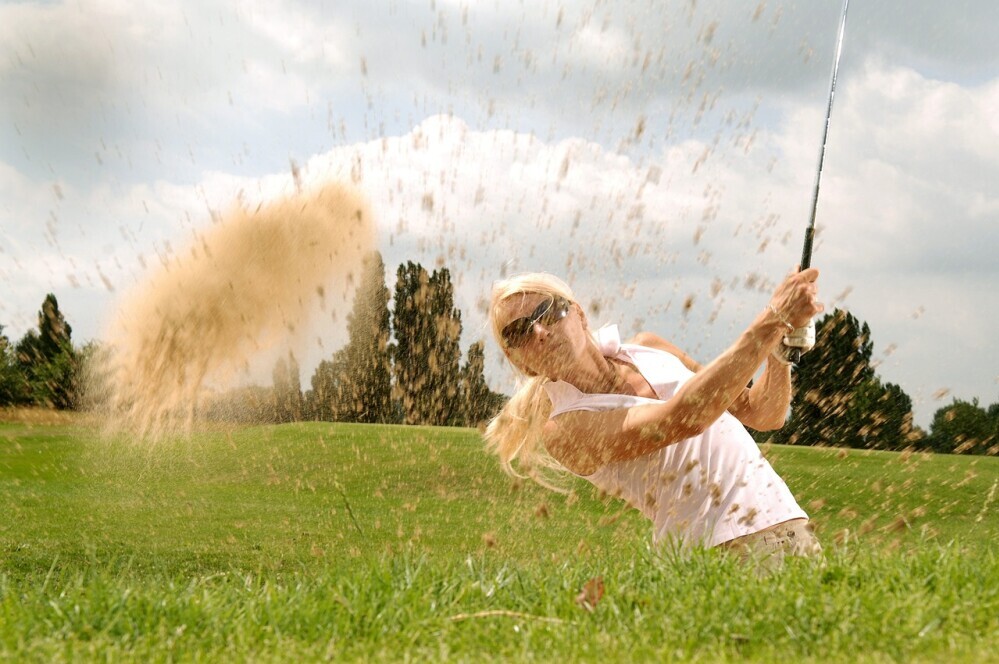What Is Hook In Golf?


Hook in golf? Yeah, I know about that. It’s that frustrating curveball that likes to show up uninvited during your play. A hook is when the ball starts out straight but then veers sharply left (for right-handed players) or right (for left-handers). It’s not much fun seeing your ball dance away from your intended path. Not to worry, because the golf viking is here to help you with your hooking woes.
Unlike the dreaded slice, which loops in the opposite direction, hooks are usually a result of excessive spin. It’s like the ball’s caught a gust of wind, but really, it’s all about physics and those tiny subtleties in your swing. This is the major difference between slicing and hooking a shot in golf.
Dealing with hooks can be especially tough for both pros and weekend golfers. Pros may experience hooks when they tweak their swings for more power but lose control. Meanwhile, casual players might find themselves building a hook habit without even realizing it—it sneaks up, turning great shots into wayward adventures. Your ball appears to be going straight down the fairway, and then you see that left curve that could wind up with your ball sitting in the rough.
If you’ve ever seen your ball dramatically change its mind mid-flight, you’re familiar with the challenge it presents. In a game that’s all about precision, a hook can mess with your scorecard, so understanding why it happens is key. So why is hooking so bad for your golf game?
A hook often stems from the mechanics of your swing path. To correct the root cause, check out our complete guide on mastering the golf swing.
Ready to level up your golf game? Click here.

The Downside of Hooking: Why a Hook is Detrimental to Your Game
Hooks can throw a serious wrench in your golf game. They introduce unpredictability, making it hard to know where your ball will end up. It’s like setting out on a road trip, only to have your car decide to veer off course whenever it feels like it. It can make what seems like a good shot into a not so good one. Plus there could be even worse things such as bunkers or water hazards that you may have to contend with.
For one, hooks lead to penalties. Ending up in the rough or out of bounds can cost you strokes and make what seemed like a good round start feeling pretty cumbersome. Those extra shots add up, and before you know it, your scorecard starts reflecting more of a mountain than a peaceful green. If constantly having to hit from the rough or bunkers, you will feel the impact of that on your scorecard. Playing from the fairway is your best bet at scoring low on a hole, and it will allow you to get more distance out of your shots, as well.
Then there’s the mental game—which we all know is huge in golf. Consistently hooking your shots can chip away at your confidence. Instead of feeling in control, a hook can leave you second-guessing every swing, worried about when the next rogue flight will occur. Golf can be a lot tougher (and less enjoyable) when you can’t get comfortable in your game. Having a calm and cool confidence can do wonders for your game.
What’s more, a hook can disrupt your rhythm. Golf’s all about getting into a groove, and when you have to keep adjusting or compensating for a hook, it stops you from finding that sweet, repeatable swing. So nailing down those hooks and understanding their negative impacts is crucial for any golfer looking to up their game. So we know that book shots are bad, so now the question is, how do we fix it?
Hooks and slices are two of the most common shot problems in golf. If you struggle with both, you’ll benefit from our step-by-step breakdown on how to fix a slice.

Common Culprits: Why Golfers Hook Their Shots
Gripping your club too tightly? That might be the first place to look if you’re struggling with hook shots. With an overly strong grip, your hands can turn over too quickly, sending that ball flying where you don’t want it. You want just the grip to be slightly loose, without losing control of the club. It’s not simply about swing but also about the wrist action of the club.
Then there’s the swing itself. A hook often creeps in with an inside-out swing path. Basically, your club comes from too far inside and sends the ball curving off-course. Some folks tend to overrotate their hands and wrists at the moment of impact, which adds extra unwanted spin that leads to that leftward curve (for righties, and vice versa for lefties). So be careful when coming down with your club that you aren’t rotating your wrists too much and putting a heavy spin on the ball.
Ever thought about your gear? Yep, sometimes it’s not just about technique. Clubs that are too upright or shafts that are too flexible can contribute to hooks. If your clubs don’t fit your game, it’s like trying to fix a leaky boat with duct tape—frustrating and not super effective. Always make sure that you are playing with clubs that fit right for you, otherwise you can struggle even with a good swing.
Keep these causes in mind next time you’re setting up for your shots. Knowing what sends your ball hugging the left (or right) side can help you make the necessary adjustments and get back on track. So we know how to hit the ball more effectively by avoiding the hook, so how can we do it on a regular basis so that we can eliminate the issue from our golf game?
The way your clubface interacts with the ball at impact can influence whether you hook it. Learn more about this connection in our article on understanding golf ball spin.

Solutions and Strategies: Eliminating the Hook from Your Game
Tweaking your grip can make a huge difference in your battle against the hook. Try keeping your hands more neutral, ensuring you’re not over-gripping. This tiny adjustment can lead to a straighter, more confident shot. This is one of the most common issues with hooking, so it’s vital that you pay attention to your wrists if you are hooking your shots often.
Check your swing path. Aim to keep your club traveling towards the target line for longer. A smoother, more controlled swing path helps reduce unwanted spin, steering clear from those annoying hooks. Over rotating your body can spell trouble for your swing. Too much spin in the wrong direction can send your ball astray into the wilds.
When in doubt, seek out pro advice. A session with a golf instructor or using swing analysis technology can give you a fresh perspective. They spot things you might’ve missed and offer targeted tips to fix those issues. If you can’t seem to figure out what’s wrong with your swing, a golf instructor can see your swing and determine what the underlying issue is.
And let’s not forget about equipment. Make sure your clubs are properly fitted—especially if you’re using hand-me-downs or off-the-shelf gear. Properly fitted clubs suit your swing and help in steering those shots toward where you intend. Playing with clubs that are too long or too short can severely hinder your game.
Sorting out a hook can shave strokes off your score. Correcting this means more fairway magic, fewer trips to the rough, and less time worrying about where your ball might end up. Your enjoyment of the game goes way up when you play with the confidence knowing that you can play from the fairway. I’ll see you out on the golf course, shooting straight as an arrow!
Sometimes equipment adjustments, like wedges with proper loft and spin, can help you regain control after a bad hook. Explore our post on the best golf clubs for backspin.


